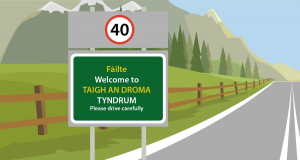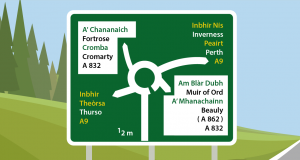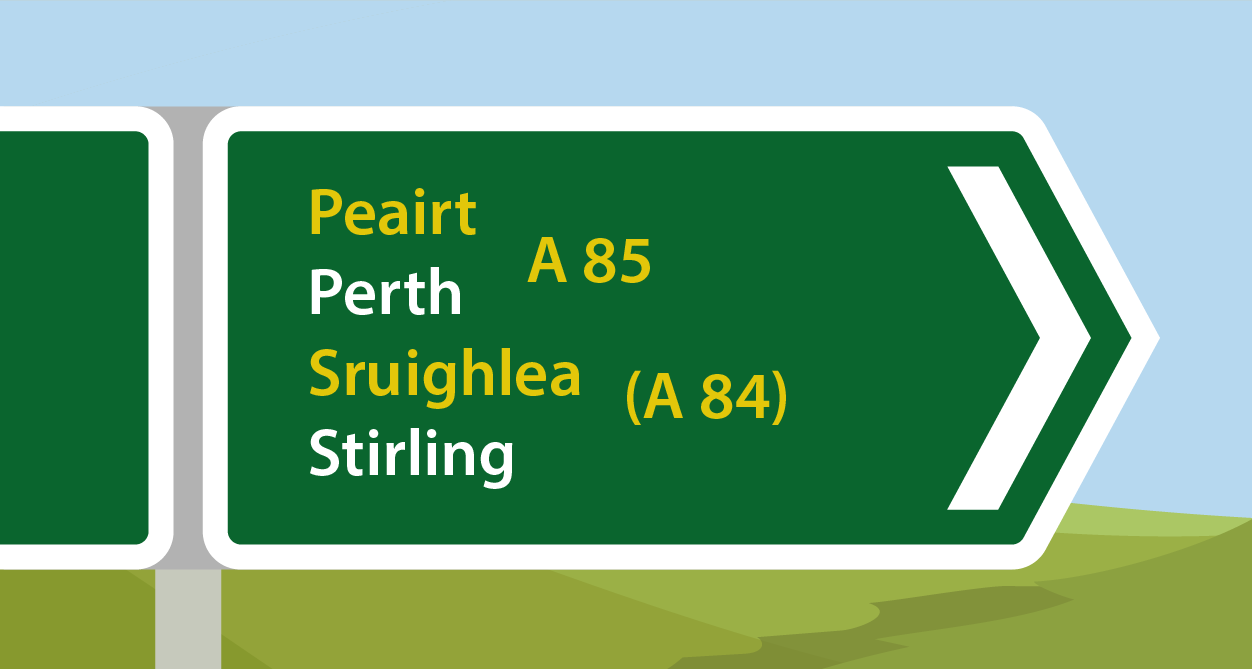We are hiring! Are you an experienced technician? Join our outstanding team »
Guide to Gaelic Road Signs
Reading time 4 minutes • Last updated on February 26th, 2021
Categories Driving Law » Entertainment »
We are hiring! Are you an experienced technician? Join our outstanding team »
Guide to Gaelic Road Signs
Reading time 4 minutes • Last updated on February 26th, 2021
Categories Driving Law » Entertainment »
Last updated on February 26th, 2021What does this mean?
This month, The Windscreen Company is here to share with you our guide to Gaelic road signs in Scotland including what they are, their history, where they’re used and some examples.

18th and 19th century – Gaelic place names were recorded and Anglicised by map makers.
20th century – Inverness County Council put up road signs throughout the Highlands as they had an aversion to the Gaelic language. The council demanded that the road signs were erected in English to match the spellings on the Ordnance Survey maps. This was an unfavourable opinion to the Gaelic language organisations and their proposal for bilingual signs was rejected by the council in 1970.
Three years later, in 1973, as a result of the Skye road sign controversy, the issue was inescapable and was pushed to the forefront of the public agenda.
At this time, the council was planning to install a new road south of Portree where it required a strip of land across Iain Noble’s land. Kindly, Noble offered the land as a donation to the council with the condition that the signs along the road were bilingual – in hope that this would be a start of registering Gaelic onto the linguistic landscape for road signs. The council resisted Noble’s terms but to the council’s dismay, Noble was backed by a petition signed by many Skye residents from Wales where bilingual signposts were already used. This proved agreeable and aroused further public interest. From there, the council offered a compromise to erect signposts as an experiment at Portree and Broadford. This then set a precedent, making Gaelic road signs in Scotland the norm.
Over £20 million was spent on Gaelic road signs leading up to 2010, and these signs can be found on the A87, A887, A830, A835, A828, A85, A82 and A83.


Pros:
Cons:
Enjoyed reading about our Guide to Gaelic road signs? Take a browse through the rest of our blog to find out more interesting facts and information on similar topics.
At The Windscreen Company, we pride ourselves on our streamline services and ability to assist all makes and models of cars – and provide these to you on the very same day. We also deal with insurance to keep the process simple and are operating using our Coronavirus-safe process to ensure our customers and staff’s wellbeing. For more information and assistance, call today – we’re happy to help.
The Windscreen Company, has over 20 years of experience in windscreen repair and replacement. Since 1998, they have been at the forefront of industry innovation, leveraging the latest technology to ensure customer safety and satisfaction.
The Windscreen Company's, help-and-advice pages offer valuable tips and guidance on maintaining vehicle safety through quality windscreen care, while also featuring updated industry realted content.
The information within this article was accurate on the date the article was last updated based on the information that was openly available on the topic online. The Windscreen Company accepts no liability for any loss or damage caused by or connected with any error or omission in this article. You should make your own judgement in regards to use of this document and seek professional advice on your particular circumstances.